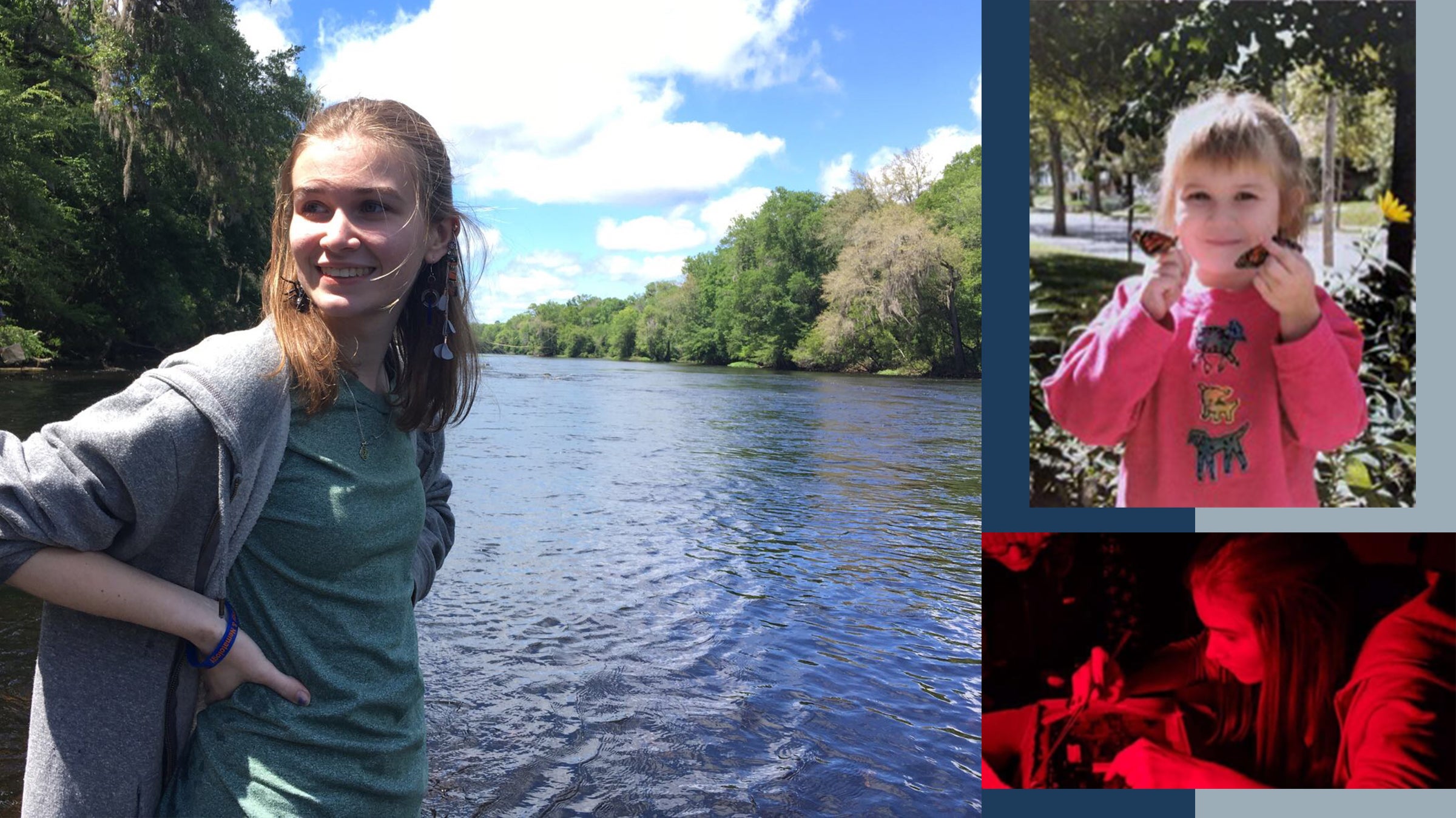
Tell us where you came from before UT, and what you studied then?
I was born and raised in the Yangtze Delta region in China, where the lush nature started my interests in botany. In my undergrad, I studied Biology and Applied Math at UCLA, and did research with Gaurav Kandlikar in Nathan Kraft’s lab group. I integrated my training in math and ecology into my research in coexistence of California annual plants, mediated by plant-soil feedbacks. We sequentially developed theory, ran a greenhouse experiment, and conducted a meta-analysis to show that soil microbes can generate frequency independent competitive differences in plants, which was an overlooked microbial effect on plant coexistence. Here at UT studying with Dr. Farrior and Dr. Wolf, I am expanding my skillset to use adaptive dynamics and soil sequencing to study how plant-microbe interactions shape the organization and function of plant communities.
What got you interested in studying the role of plant-soil microbe interactions?
I have long been interested in plant diversity, so it is natural to study what mechanisms help maintain this diversity. But why plant-soil microbe interaction as the mechanism I ended up focusing on? To be honest, I first started to look at plant-soil microbe interaction in my undergrade simply because my graduate student mentor Gaurav Kandlikar started to work with it. However, very soon I realized it was a great choice. Sequencing technologies are advancing yet becoming increasingly affordable, allowing us to reveal impacts of this previously unseen community on plant community dynamics in nature. Based on evidence accumulated in the past few decades, soil microbes cultivated by plants can have noticeable, distinct effect on growth of plant species, which can scale up to influence the assembly of plant communities. The multidimensionality of the soil microbial communities also has the potential to explain the magnitude of diversity of plant species, which cannot be attributed to resource competition alone. Moreover, developments in statistical tools and coexistence theories have enabled deeper understanding of the microbial community structures and how they modify plant-plant interactions and coexistence in complex communities.
Does Texas present a unique situation, challenge or benefit for your research?
The annual plants and grassland ecosystem in central Texas is a great study system for my research. First, the fast life cycle of annual species has made it feasible to empirically test ecological theories. Second, I have worked with annual California grassland species before and am familiar with the system. Finally, understanding plant diversity in nature is an overarching motivation for all my research, and the diverse native grassland plants here are a natural reminder of that motivation.

The BFL biodiversity experiment where Xinyi collects soil samples, in April 2022.
However, the biggest advantage is the accessibility of UT’s field stations. I was able to be involved in the biodiversity experiment because Brackenridge Field Laboratories (BFL) is so close to campus that I can easily get there without a car. Moreover, BFL offers facilities where I could do molecular work, and helpful staff who support my research needs. My proposed project as a Stengl Wyer fellow would not have happened without the support from the UT field station.
How will being a Stengl-Wyer Fellow help advance your work?
Being a Stengl-Wyer Fellow would allow me to focus on research and explore new statistical modeling methods that would be otherwise too “risky” to pursue. Practically, the fellowship also contributes research fund that I can use for sequencing more soil samples. Together, during the fellowship year, I will be able to study the effect of plant diversity and environmental factors on soil microbial communities and relate this above-below-ground linkage to the functioning of plant community. I will also analyze the plant percent cover data as a proxy for the strength of plant-plant interactions, and connect changes in those interactions across the years with changes in microbial communities.
Lastly, the Stengl-Wyer fellowship and scholarship program fosters a close community of early career scientists where we discuss our research and topics on professional development. Winning the fellowship not only advances my current project, but also my future research and career development.
Where do you see your research agenda heading after UT?
I will continue with my research interest in understanding plant-soil microbe interactions as a potential mechanism of maintaining plant community structure and functions, but bringing together the discrete skills and interests over these years to gain a more integrative understanding. First, I would like to develop a statistical method that utilizes the multidimensional data of microbial sequences to parametrize dynamics of plant-microbe interactions. I am also interested in integrating coexistence theories into biodiversity-ecosystem functioning research. Plant microbe interactions can mediate multispecies plant coexistence, and they also influence plant diversity-productivity relationships. I would like to develop theory (building on existing work on plant resource competition) to mathematically bridge the two separate lines of research. Lastly, I plan to continue looking into the mechanisms (and relevant traits) of plant-litter-microbe interactions, eco-evolutionary dynamics of those traits under global change, and how trait evolution scale up to affect community assembly and carbon cycling.



